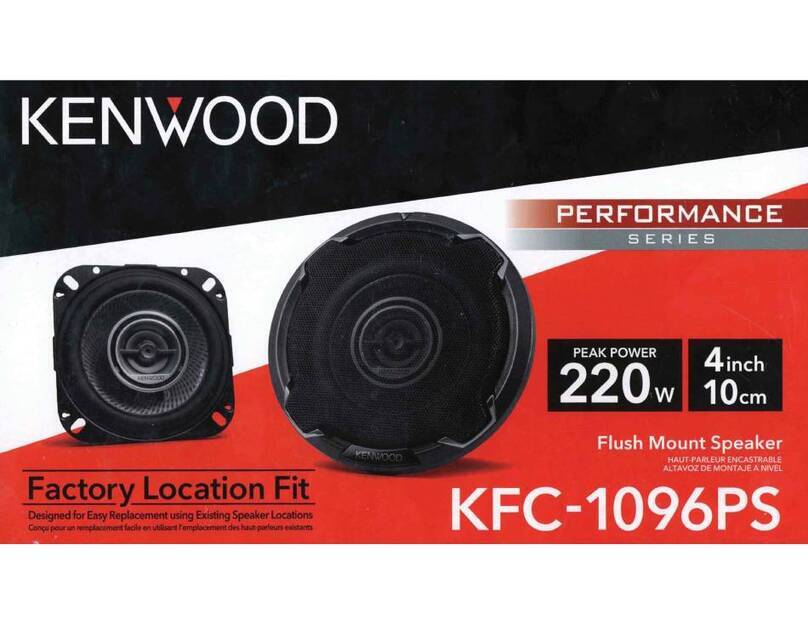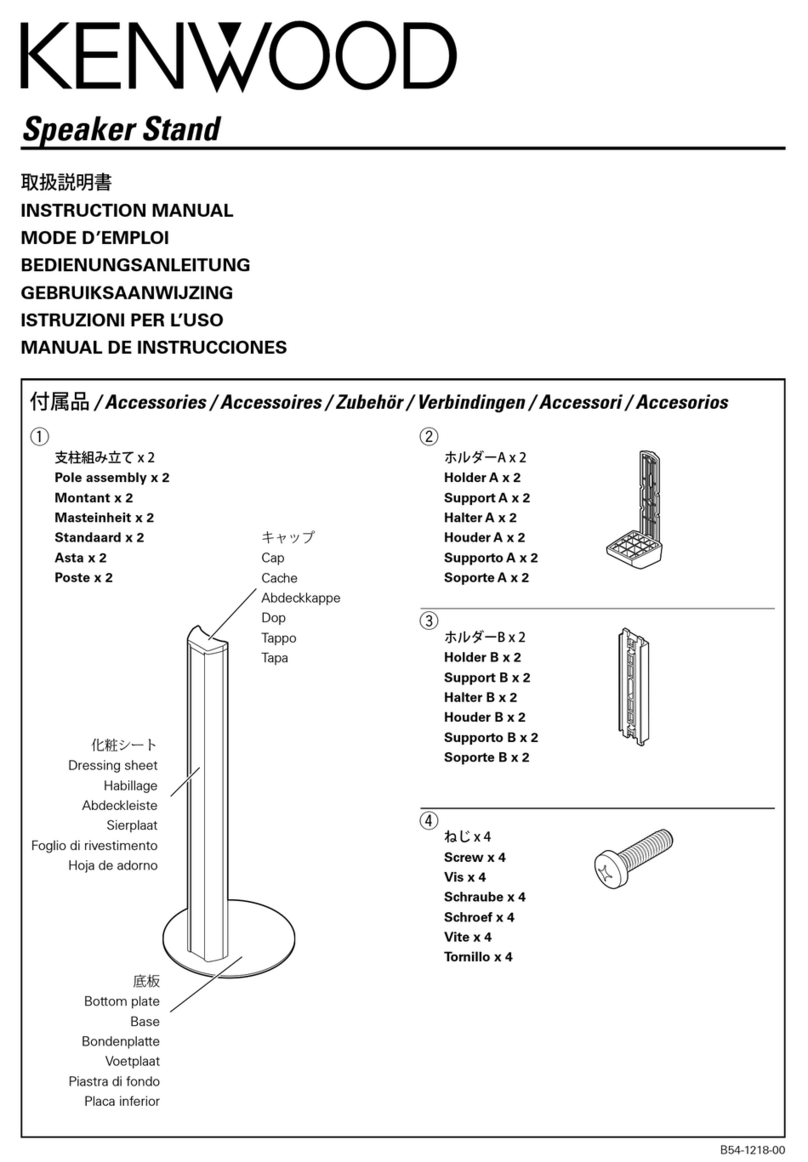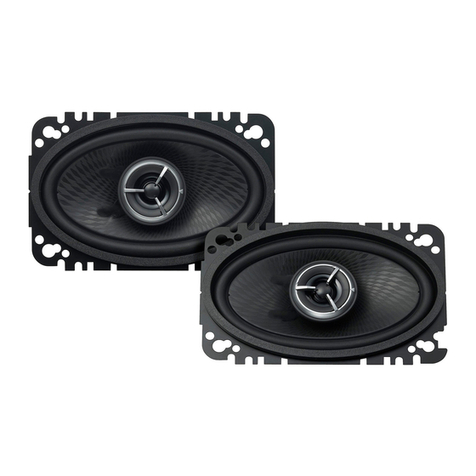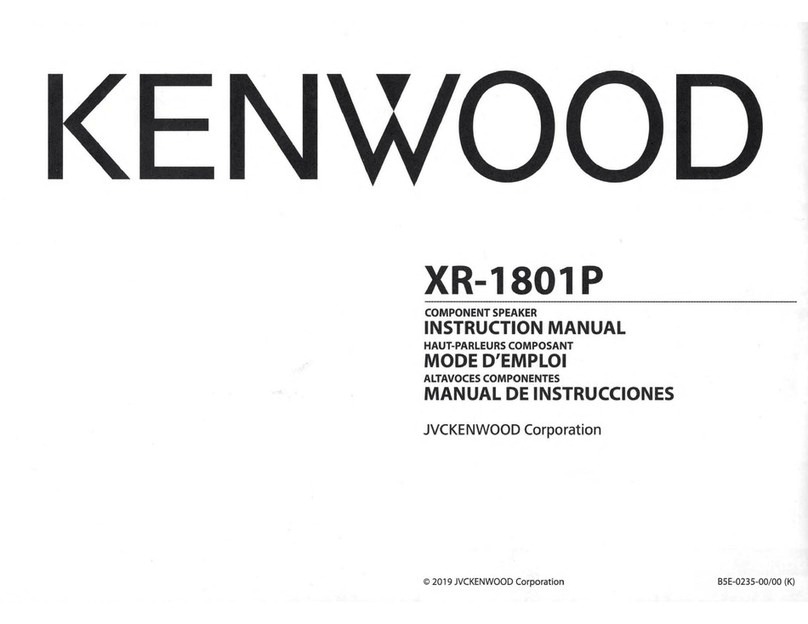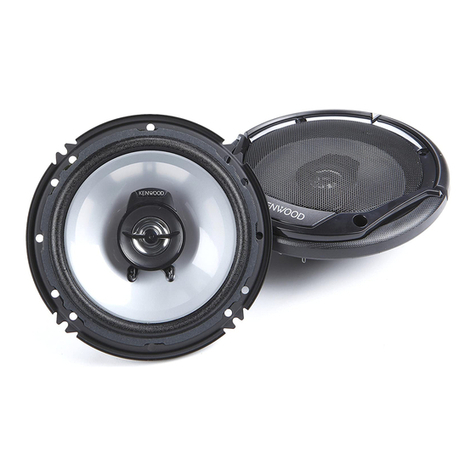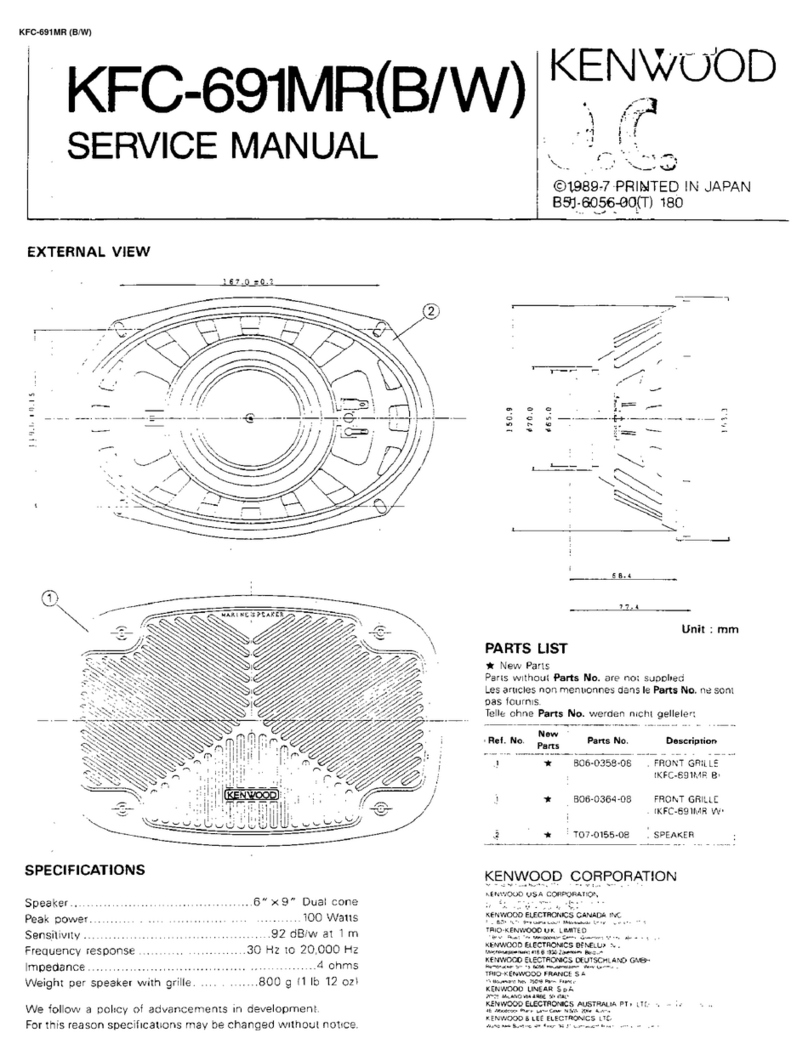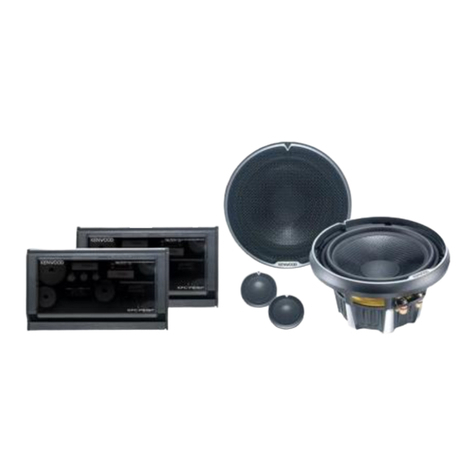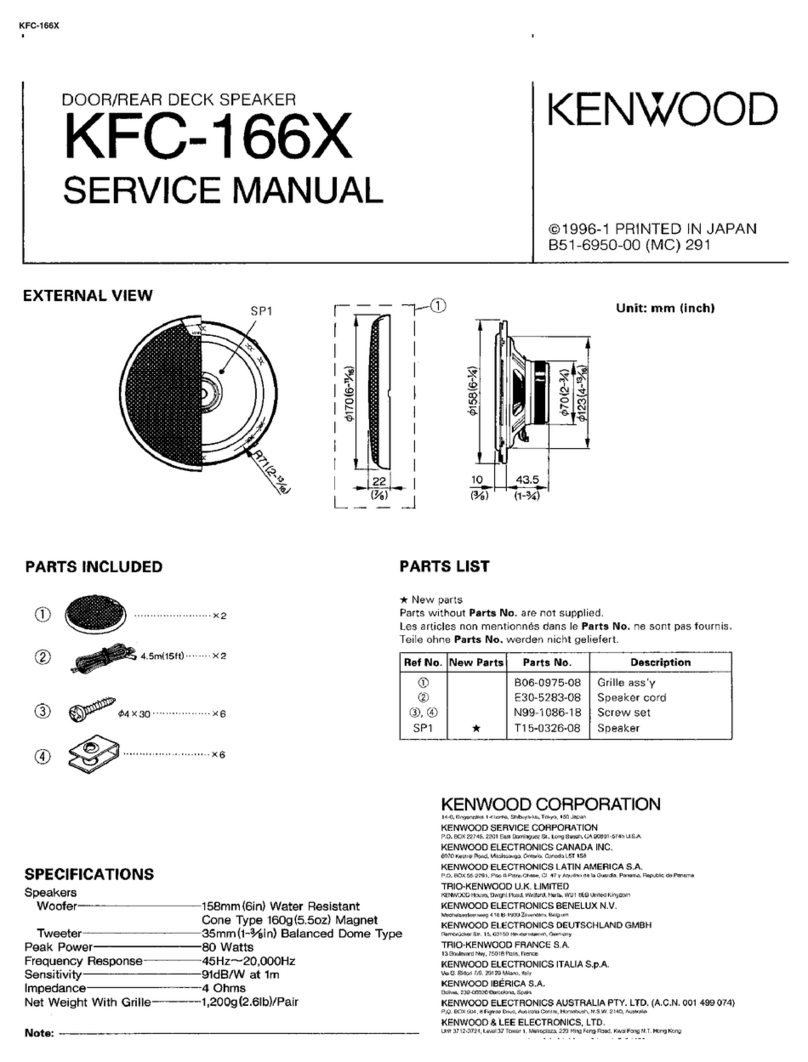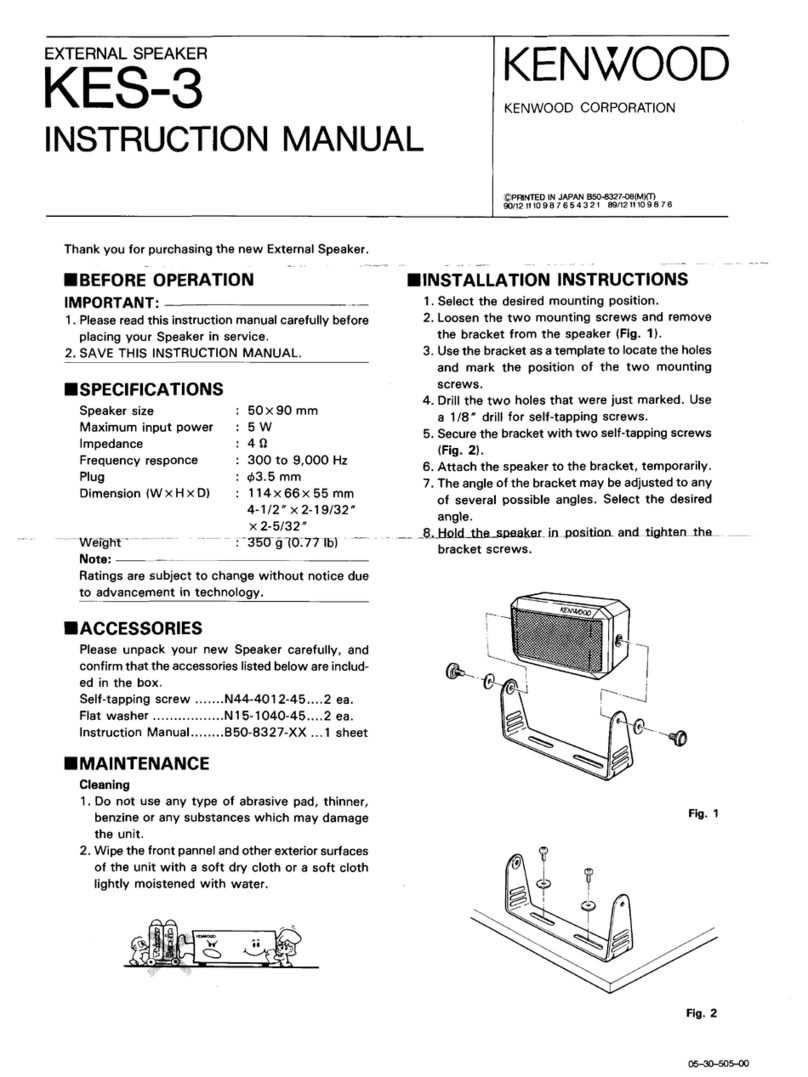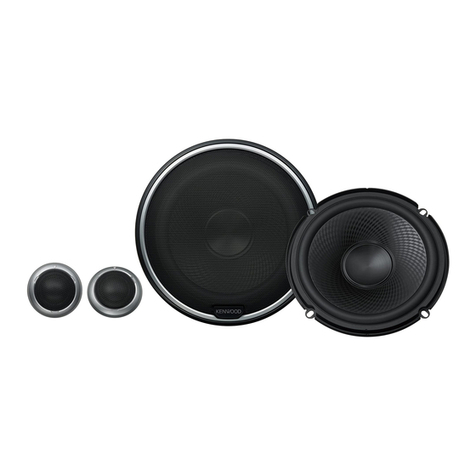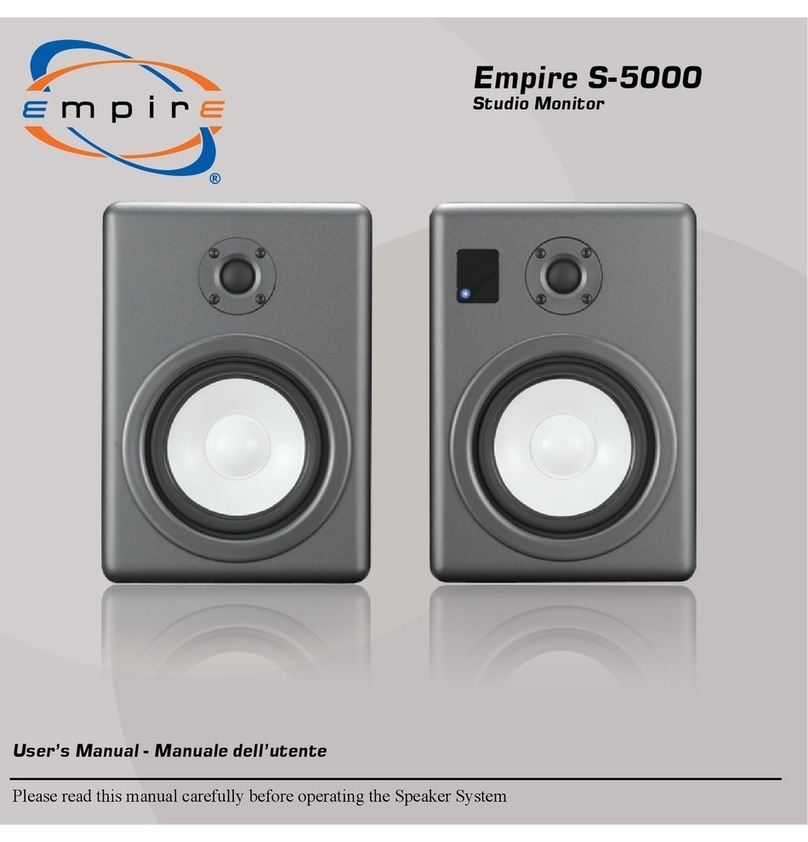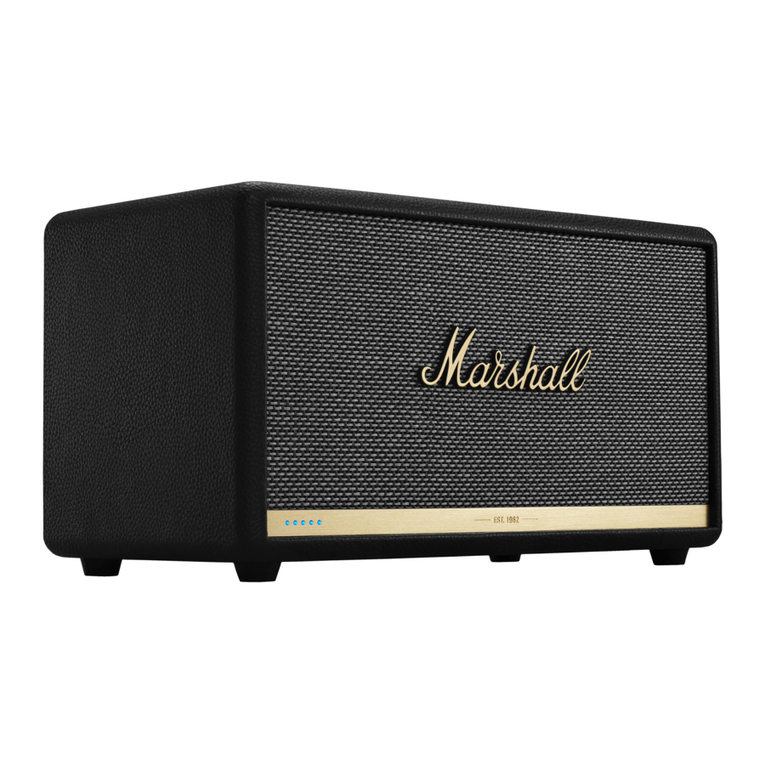
2
PANEL DESCRIPTIONS
FRONT PANEL
b
acde
aPHONES Jack
Connects a set of headphones. Mates with a set of headphones with
4 to 32Ωimpedance. If the filter has been enabled, the filtered audio is
sent out. If the set of headphones is connected to the PHONES jack,
no audio sounds from a speaker.
bSPEAKER
The speaker with Φ100 mm (3.94 in) and 8Ωinput impedance is the
most suitable for reception.
cMUTE Key
With a single key press, mutes the audio line to a speaker. This switch
can be used to temporarily deactivate the audio line to the speaker.
Pressing the key again while the audio line is being muted unmutes the
audio line.
dINPUT A and INPUT B Keys
Toggles the audio input between Input A and Input B. A key press se-
lects the Input A, and a key press again selects the Input B.
eFILTERS Key
FILTERS HIGH 1 Key
While this filter is active, the signal above 2.4 kHz can be attenuated. (2.4
kHz, -3 dB)
FILTERS HIGH 2 Key
While this filter is active, the signal above 1.0 kHz can be attenuated. (1.0
kHz, -3 dB)
Also, if this filter is active while the Filter High 1 filter is active, the signal
above 700 Hz can be attenuated. (700 Hz, -3 dB)
FILTERS LOW 1 Key
While this filter is active, the signal below 200 Hz can be attenuated. (200
Hz, -3 dB)
FILTERS LOW 2 Key
While this filter is active, the signal below 400 Hz can be attenuated. (400
Hz, -3 dB)
Also, if this filter is active while the Filter Low 1 filter is active, the signal
below 600 Hz can be attenuated. (600 Hz, -3 dB)
FRONT BASES
The lift-up supplementary bases are available in the front bases on the
bottom of the speaker.To position the front panel slightly toward the upper
side, pull the supplementary bases forward to the limit.
REAR PANEL
a
LINE OUT INPUT A INPUT B
b
aLINE OUTPUT Terminal
This is the line output terminal. This terminal can be used for recording
of the received audio or for the data communications. If the filter has
been enabled, the filtered audio is sent out. The output impedance is
1kΩ.
bINPUT A and INPUT B Terminals
Connect the transceiver to the INPUT A and INPUT B terminals, then
use a switch on the front panel to switch. For the TS-990 transceiver,
mates with the EXT.SP 1 or EXT.SP 2 terminal. Connecting not only
the TS-990 transceiver but also other transceiver to the speaker, and
the audio input line can be switched.
TIPS AND HINTS
With the filter combination, a filter optimal to the operating mode can be
selected.
Following are tips and hints applicable to each operating mode.
In SSB mode, the High 1 filter is normally used. If the noise level is high,
the High 1 filter can be used by combining it with the Low 1 or Low 2 filter.
To gain the efficiency, the High 2 filter can be used by combining it with the
Low 2 filter.
In CW mode, while both High 1 and High 2 filters are active, you can com-
bine the filters with the Low 1 and Low 2 filters. If the transceiver is oper-
ated with the narrow-band IF DSP filter or the Auto Peak Filter enabled,
the audio filter effect of the transceiver cannot clearly be distinguished;
however, there may be an effect to eliminate the noise components.
In AM or FM mode, a filter is normally deactivated, so that you can use the
wide bandwidth. If any noise is audible, you can activate the High 1 filter.
FILTER BEHAVIORS
1 If both High 1 and Low 1 filters are active, the passband is ranging
from 200 Hz to 2.4 kHz.
2 If both High 1 and Low 2 filters are active, the passband is ranging
from 400 Hz to 2.4 kHz.
3 If both High 2 and Low 2 filters are active, the passband is ranging
from 400 Hz to 1.0 kHz.
4 All High 1, High 2, Low 1, and Low 2 filters are active, the passband is
ranging from 600 Hz to 700 Hz.
HIGH 2
HIGH 1
HIGH 1+2
OFF
LOW 1
LOW 2
LOW1+2
3 dB
0 dB
-3 dB
-6 dB
-9 dB
-12 dB
-15 dB
-18 dB
-21 dB
-24 dB
-27 dB
-30 dB
3 dB
0 dB
-3 dB
-6 dB
-9 dB
-12 dB
-15 dB
-18 dB
-21 dB
-24 dB
-27 dB
-30 dB
100 Hz 1 KHz 10 KHz
100 Hz 1 KHz 10 KHz
HIGH CUT FILTER
LOW CUT FILTER
OFF

